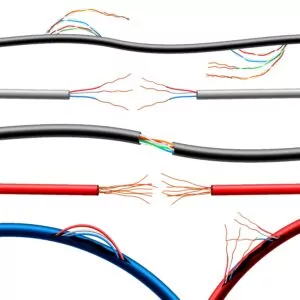Wire Size Calculator
Effortlessly calculate the ideal wire size for your electrical circuits with our user-friendly wire size calculator. Designed for electricians, engineers, and DIY enthusiasts alike, this tool helps you determine the best wire size to handle your circuit’s voltage, current, and length. Enter your circuit details, such as the source voltage, maximum amperes, phase type, insulation temperature, conductor material, installation method, allowable voltage drop, and circuit distance, and the calculator will show you the optimal wire size for your needs. Follow the easy steps below and gain a clear understanding of your circuit requirements!

Instructions:
Step 1: Choose your measurement units (Imperial or Metric).
Step 2: Input the source voltage of your circuit in the corresponding input field.
Step 3: Enter the maximum amperes that your circuit will handle.
Step 4: Select the phase of your circuit (Single-Phase or Three-Phase).
Step 5: Choose the insulation temperature rating of your wire.
Step 6: Select the conductor material in your wire (Copper or Aluminum).
Step 7: Choose the method of installation for your circuit (Raceway, Cable, Buried in Earth, or Open Air).
Step 8: Select the allowable voltage drop in your circuit.
Step 9: Input the one-way length of your circuit in the “Distance” input field.
Step 10: Click Calculate to determine the optimal wire size for your circuit.
Step 11: Review the results to see the suggested wire size and the voltage at maximum drop. Use this information to effectively plan your electrical project.
| Wire Size | |
|---|---|
| Voltage at Max Drop |
The online wire size calculator provided by busybusy is a tool designed for informational purposes only. While we strive to ensure accuracy, we do not guarantee the reliability or suitability of the results for any specific purpose. Users are solely responsible for the interpretation and application of the calculated information. busybusy disclaims any liability for actions taken or decisions made based on the results obtained from the calculator. It is recommended to consult with a qualified professional for precise construction calculations and decisions. By using this calculator, you acknowledge and accept these terms.
Useful Terms
Source Voltage - Key in the circuit's source voltage. Single-phase voltages typically range from 115V or 120V, while three-phase voltages span from 208V, 230V to 480V.
Amperage - Input the highest current in amperes that the circuit will handle. For machinery, it's advised to multiply the nameplate Full Load Amps by 1.25 for effective wire sizing.
Phases - Select the phase count in the circuit. This is usually single-phase or three-phase. Single-phase circuits require three wires, while three-phase circuits demand four wires, including a ground wire.
Insulation - Choose the wire's insulation thermal rating.
Conductor - Select the conductor material in the wire. Common options include copper and aluminum.
Installation - Choose the circuit's installation method. This is usually in a conduit or cable-tray (raceway), cable, buried in the ground, or in open air.
Voltage Drop - Select the maximum percentage of source voltage drop. It's advised not to go beyond a voltage drop of 5%.
Distance - Key in the one-way wire length in the circuit in feet.
Note: It's suggested to verify the wire's ampacity after performing a voltage drop calculation. Always use the circuit's total length for computations. Consult an engineer if your project demands more intricate calculations.
Reference: NFPA 70, National Electrical Code, Table 310.15(B)(16-17)